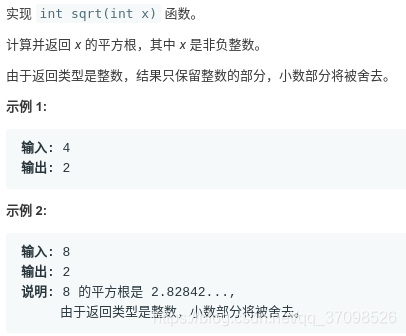
利用二分法,如果中值平方大于x则在左边寻找,如果中值+1的平方小于等于x则在右边寻找,如果中值平方小于等于x且中值+1的平方大于x,则该中值就是返回的整数平方根。
class Solution(object):
def mySqrt(self, x):
"""
:type x: int
:rtype: int
"""
if x == 0:
return 0
i = 1
j = x
mid = int(x/2)
while i <= j:
if mid**2 <= x and (mid+1)**2 > x:
return mid
elif mid**2 > x:
j = mid - 1
mid = int((i+j)/2)
elif (mid+1)**2 <= x:
i = mid + 1
mid = int((i+j)/2)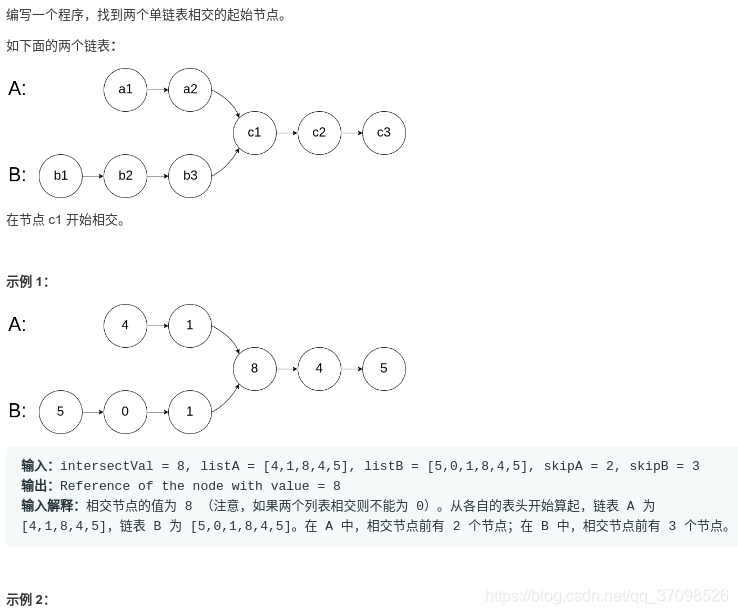
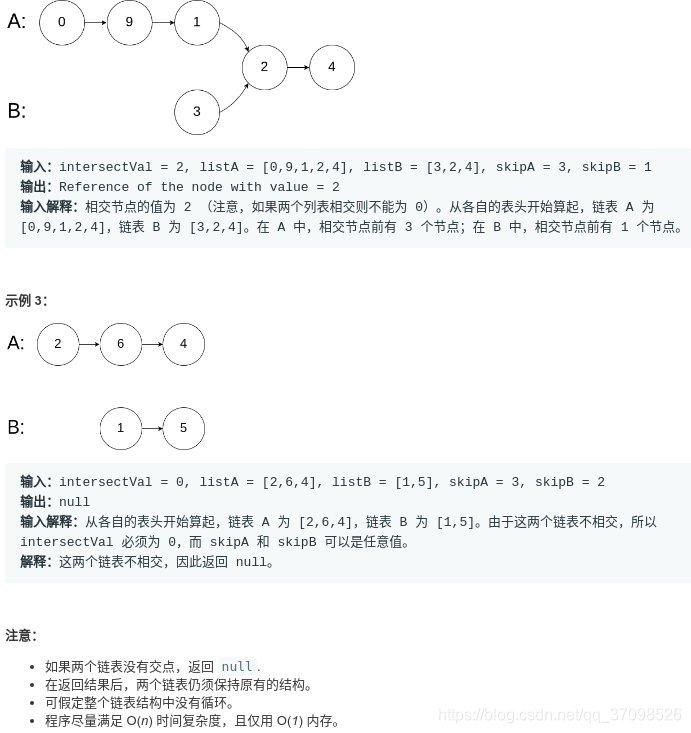
设置两个指针pA,pB指向两个链表头,遍历两次,如果pA指向了None,则指到headB,如果pB指向了None,则指到headA,两次遍历结束后,消除了长度差,此时继续遍历,如果得到了pA==pB,则该节点为相交节点,返回该节点,如果遍历结束pA和pB都指向了None,则没有相交节点,返回None。

# Definition for singly-linked list.
# class ListNode(object):
# def __init__(self, x):
# self.val = x
# self.next = None
class Solution(object):
def getIntersectionNode(self, headA, headB):
"""
:type head1, head1: ListNode
:rtype: ListNode
"""
pA = headA
pB = headB
for _ in range(2):
while pA != None and pB != None:
pA = pA.next
pB = pB.next
if pA == None:
pA = headB
if pB == None:
pB = headA
while pA != None and pB != None:
if pA == pB:
return pA
pA = pA.next
pB = pB.next
return None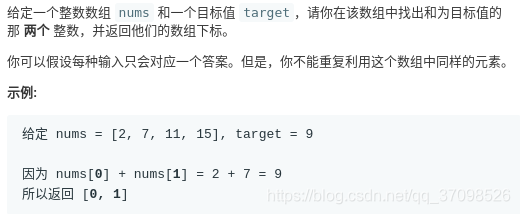
遍历一次数组,利用哈希表,将遍历过的值与索引存入哈希表中,遍历时查找目标值与当前值的差是否在哈希表中,如果在,则输出差和当前值的索引,直到遍历结束,输出None。
class Solution(object):
def twoSum(self, nums, target):
"""
:type nums: List[int]
:type target: int
:rtype: List[int]
"""
d = {}
for i,v in enumerate(nums):
if target-v in d:
return [i, d[target-v]]
d[v] = i
return None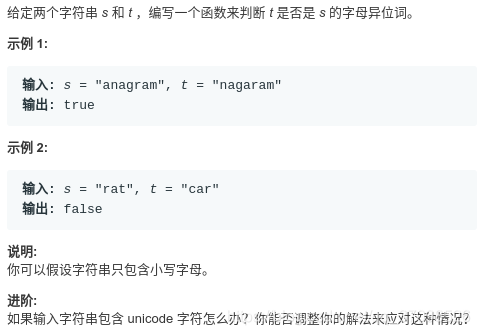
python可以判断两个字典是否相等,所以建立两个字典(哈希表),统计两个字符串出现的字符频次,如果两个字典相等,则返回True,否则返回False。题解中写的是另一种方法,只需要建立一个哈希表,对应26个字母的数量,遍历s时在每个字母的数量上加一,遍历t时在每个字母的数量上减一,如果该哈希表的每个映射值都为0,则返回True,否则返回False。
class Solution(object):
def isAnagram(self, s, t):
"""
:type s: str
:type t: str
:rtype: bool
"""
d1 = {}
d2 = {}
if len(s) != len(t):
return False
for i in s:
d1[i] = d1.get(i, 0) + 1
for j in t:
d2[j] = d2.get(j, 0) + 1
if d1 == d2:
return True
else:
return False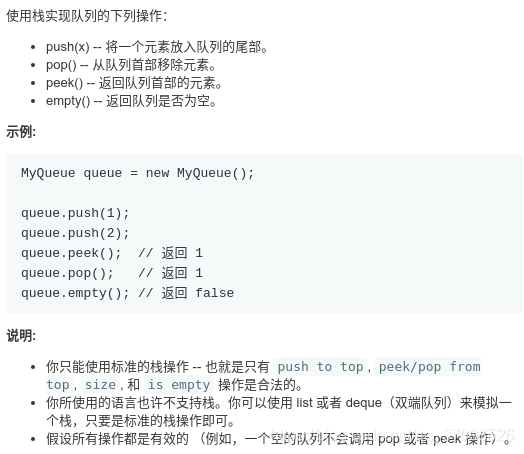
使用python的list,push操作在列表尾加上元素,pop操作为返回list[0]并更新列表为list[1:],peek操作返回list[0],empty操作判断列表长度是否为0。
class MyQueue(object):
def __init__(self):
"""
Initialize your data structure here.
"""
self.queue = []
def push(self, x):
"""
Push element x to the back of queue.
:type x: int
:rtype: None
"""
self.queue = self.queue + [x]
def pop(self):
"""
Removes the element from in front of queue and returns that element.
:rtype: int
"""
key = self.queue[0]
self.queue = self.queue[1:]
return key
def peek(self):
"""
Get the front element.
:rtype: int
"""
return self.queue[0]
def empty(self):
"""
Returns whether the queue is empty.
:rtype: bool
"""
if len(self.queue) == 0:
return True
else:
return False
# Your MyQueue object will be instantiated and called as such:
# obj = MyQueue()
# obj.push(x)
# param_2 = obj.pop()
# param_3 = obj.peek()
# param_4 = obj.empty()

























 被折叠的 条评论
为什么被折叠?
被折叠的 条评论
为什么被折叠?








